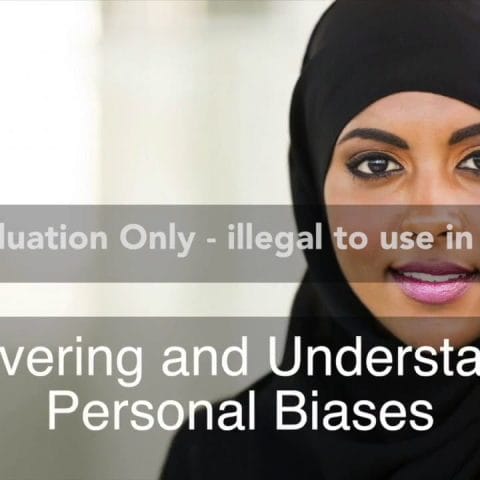Did you know that companies with diverse workforces are 35% more likely to outperform their competitors? Embracing diversity and inclusion has become a top priority for organizations seeking to create equitable and welcoming workplaces. This has led to an increased demand for diversity trainers who can facilitate training programs that promote understanding, empathy, and cultural competence.
If you’re passionate about creating positive change and want to learn how to become a diversity trainer, this article will guide you through the essential steps to embark on this rewarding career path. From obtaining the necessary certifications to tailoring training programs to your company’s specific needs, we’ll explore the key aspects of becoming an effective diversity trainer.
Key Takeaways:
- Companies with diverse workforces are 35% more likely to outperform their competitors.
- Becoming a diversity trainer involves obtaining the necessary certifications and expertise.
- Customizing diversity training programs to meet the specific needs of your organization is crucial.
- Continuously assessing and improving the effectiveness of diversity training is essential for long-term impact.
- Diversity trainers play a vital role in fostering inclusive workplaces and promoting cultural competence.
What is a DE&I Training Program?
A DE&I training program plays a crucial role in addressing biases and prejudices that have hindered the representation and advancement of underrepresented groups in the workplace. By equipping employees with the necessary knowledge and skills, these programs aim to create diverse, equitable, and inclusive companies where individuals from all backgrounds feel valued, respected, and included.
DE&I training programs cover a range of topics, such as diversity training, equity training, and inclusion training, to increase empathy, understanding, and cultural competency. This comprehensive approach helps employees recognize and address their own biases, prejudices, and unconscious behaviors that may contribute to unequal treatment and exclusion.
Embedded link: Click here to learn more about DE&I training.
By fostering a workplace culture that actively promotes inclusion and challenges bias, organizations can create an environment that empowers everyone to thrive and contribute their unique perspectives. DE&I training programs provide a foundation for building awareness, empathy, and understanding among employees, which leads to increased collaboration, innovation, and employee satisfaction.
“Diversity is being invited to the party. Inclusion is being asked to dance.” – Verna Myers
DE&I training programs empower employees to question assumptions, challenge stereotypes, and build inclusive behaviors necessary to create a positive and harmonious work environment. By fostering a culture of respect, open-mindedness, and acceptance, these programs help break down barriers and build bridges across diverse teams.
Moreover, DE&I training programs are vital for promoting diversity and inclusion in leadership positions, challenging systemic barriers, and unlocking the full potential of underrepresented groups. By addressing biases and prejudices, these programs enable organizations to tap into a wider pool of talent, improve decision-making, and foster innovation.
Creating a DE&I Training Program

Developing a successful DE&I training program requires careful planning and consideration. It is crucial to have a clear and detailed definition of what the program entails, addressing key areas such as diversity training, equity training, and inclusion training. By covering topics like unconscious bias, microaggressions, and cross-cultural communication, the program can effectively educate employees and foster a more inclusive and diverse workplace.
One vital aspect of creating a DE&I training program is aligning it with the company’s mission, values, and ethics. The program should reflect the organization’s commitment to diversity and inclusion by incorporating its core principles. This alignment ensures that the training is not seen as a mere formality, but an integral part of the company’s culture.
“A strong DE&I training program can effectively mitigate legal risks, bolster recruitment and retention efforts, and contribute to a more productive and harmonious workplace.”
Effective DE&I training goes beyond legal compliance. It creates an environment where employees feel valued, respected, and empowered to contribute their unique perspectives. By instilling a deep understanding of diversity and inclusion principles, employees can work together more harmoniously, celebrate differences, and collaborate effectively.
Integration of DE&I training with the company’s mission, values, and ethics helps instill a sense of purpose and alignment among employees. It reinforces the organization’s commitment to creating an equitable and inclusive work environment where everyone has an equal opportunity to thrive.
Creating a DE&I training program that aligns with the company’s mission, values, and ethics is essential for fostering an inclusive and diverse workplace. It enhances employee engagement, promotes a positive company culture, and contributes to the overall success of the organization.
Benefits of a DE&I Training Program
A well-designed and implemented DE&I training program provides numerous benefits for both employees and the organization as a whole:
- Enhanced employee morale and job satisfaction
- Improved collaboration and teamwork
- Increased cultural competency
- Reduced instances of bias and discrimination
- Enhanced ability to attract and retain diverse talent
- Expanded market reach and customer base
By investing in a comprehensive DE&I training program that aligns with the company’s mission, values, and ethics, organizations can create a more inclusive and equitable workplace while reaping the many benefits it brings.
Key Elements of a DE&I Training Program
| Element | Description |
|---|---|
| Understanding Diversity | Explore the concept of diversity and its importance in the workplace. |
| Recognizing Unconscious Bias | Address the role of unconscious bias in decision-making processes and how it can impact inclusivity. |
| Promoting Inclusive Communication | Provide strategies for effective cross-cultural communication and fostering an inclusive environment. |
| Creating Equitable Practices | Explore ways to develop and implement equitable practices and policies within the organization. |
| Preventing Harassment and Discrimination | Educate employees about the importance of preventing harassment and discrimination in the workplace. |
Implementing a DE&I training program that encompasses these key elements can contribute to a more inclusive, equitable, and successful organization.
An effective DE&I training program can help organizations cultivate inclusive workplaces where employees feel valued and respected. It aligns with the company’s mission, values, and ethics, promoting diversity, equity, and inclusion throughout the organization. By investing in DE&I training, a company demonstrates a commitment to creating a culture that celebrates differences, fosters collaboration, and drives overall success.
Extending and Maintaining DE&I Training
Implementing diversity, equity, and inclusion (DE&I) training is not a one-time effort but an ongoing commitment to creating an inclusive workplace. It is crucial to extend and maintain DE&I training over an extended period to ensure long-lasting impact and meaningful change.
Diversity awareness and ongoing training initiatives are vital for fostering a culture of inclusivity and belonging within organizations. It is not enough to provide a single training session; instead, companies should integrate DE&I training into their day-to-day operations through a range of programs, events, and celebrations.
Cultural Commitment
A cultural commitment to diversity and inclusivity involves reinforcing the message regularly and consistently. By weaving diversity and inclusion into the fabric of the company’s culture, training becomes more than just a lecture but a reinforcement of positive behavior.
“Diversity is about all of us, and about us having to figure out how to walk through this world together.”
– Jacqueline Woodson
Managers play a critical role in maintaining DE&I training. They should not only participate in training themselves but also guide and coach employees when their behaviors contradict the inclusive environment. Ongoing reinforcement is essential for fostering a lasting mindset shift.
The Power of Reinforcement
Reinforcing DE&I training can be accomplished through various means, including:
- Mentoring programs: Pairing employees from different backgrounds and levels of experience fosters mutual learning and understanding.
- Regular check-ins: Managers should have ongoing conversations with their team members to reinforce DE&I principles and address any concerns or conflicts that may arise.
- Employee resource groups: Establishing employee-led resource groups dedicated to different diversity dimensions provides a platform for ongoing training and support.
- Cultural celebrations: Organizing events and activities that celebrate different cultural traditions and values helps foster appreciation and understanding among employees.
By incorporating these strategies, organizations can create a sustainable diversity awareness and training program that promotes continuous learning, growth, and inclusivity.
| Benefits of Extending and Maintaining DE&I Training | |
|---|---|
| Improved cultural competence and awareness | Enhanced employee morale and satisfaction |
| Reduced unconscious bias and discrimination | Higher levels of collaboration and innovation |
| Increased retention of diverse talent | Improved customer satisfaction and loyalty |
Tailoring DE&I Training to Your Company

Every organization is unique, and DE&I training programs should be tailored to meet the specific needs and challenges of each company. To effectively implement DE&I training, it is crucial to start with a thorough assessment of the company’s culture, identifying any unresolved issues and conflicts that may hinder progress. This assessment provides a clear understanding of the organization’s current state and helps in designing a program that addresses its specific barriers to diversity and inclusion.
While conducting an internal assessment is important, it can also be valuable to seek professional help from outside experts who specialize in DE&I initiatives. These experts bring fresh perspectives and expertise in identifying diversity and inclusion barriers that may not be immediately visible to company stakeholders. Utilizing the knowledge and experience of these professionals can ensure a more comprehensive and effective training program.
One effective way to make DE&I training relevant and relatable to employees is by using real-life examples that are specific to the company. By incorporating real scenarios and case studies, employees can better understand how diversity and inclusion impact their daily work experiences. This approach fosters a deeper connection and engagement with the training material, making it more likely to have a lasting impact.
In the design of the DE&I training program, it’s essential to consider the unique needs, history, and culture of the company. By aligning the program with these factors, it becomes more relatable and meaningful to employees. The content should be tailored to address the specific challenges and opportunities within the organization, allowing employees to see the direct relevance of the training to their work and the overall objectives of the company.
Ultimately, tailoring DE&I training to your company’s specific context helps create a more effective and impactful program. It ensures that employees can connect with the material, promoting a deeper understanding of diversity and inclusion and inspiring positive changes in behavior and mindset.
Example: Benefits of Tailoring DE&I Training
“At XYZ Corporation, we realized the importance of tailoring DE&I training to our unique organizational context. By conducting an assessment and engaging external experts, we gained valuable insights into the diversity and inclusion barriers specific to our company. Incorporating real-life examples that resonate with our employees’ experiences, we saw increased engagement and participation in the training sessions. This personalized approach helped foster a more inclusive and collaborative work environment, resulting in improved teamwork, employee satisfaction, and ultimately, better business outcomes.”
Table: Elements to Consider When Tailoring DE&I Training
| Considerations | Description |
|---|---|
| Company Culture Assessment | Evaluate the organization’s current culture, identifying areas that need improvement and addressing any existing biases or barriers. |
| External Expertise | Engage professionals to provide fresh perspectives and insights, helping identify the unique diversity and inclusion challenges faced by the company. |
| Real-Life Examples | Incorporate case studies and scenarios that reflect the company’s specific experiences, making the training material more relatable and impactful. |
| Adaptation to Company Needs | Customize the content, exercises, and delivery methods to align with the company’s history, values, and objectives. |
The Importance of Change in DE&I Training
DE&I training plays a crucial role in transforming employees’ mindset and behavior, fostering a culture of diversity and inclusion within organizations. The training equips employees with the knowledge and skills needed to understand and appreciate diversity, promoting an inclusive work environment where discrimination is actively rejected.
By addressing unconscious biases and increasing awareness of the experiences and challenges faced by underrepresented groups, DE&I training facilitates a behavioral shift among employees. It encourages them to embrace differences, respect one another, and actively contribute to creating a workplace that values and celebrates diversity.
The transformative impact of DE&I training extends beyond individual employees. It enhances employee engagement by fostering a sense of belonging and pushing individuals to reach their full potential. Employees who receive DE&I training are more likely to collaborate effectively, leading to stronger and more productive relationships among team members.
Change in DE&I training should be an ongoing process that is measured and tracked to ensure its effectiveness. Regular evaluations and assessments enable organizations to identify gaps and make necessary adjustments to the training program. By continuously refining and adapting the training approach, organizations can stay responsive to the evolving needs of their workforce and create a lasting impact.
Customizing Diversity Training
Customizing diversity training to meet the specific needs of each company is crucial for its relevance and effectiveness. By analyzing the diversity within the organization and addressing workplace issues, such as bias and discrimination, customized training programs can provide employees with a deeper understanding of diversity and inclusion within their specific work environment.
When customizing diversity training, it is important to conduct a thorough assessment of the current diversity landscape within the company. This analysis will help identify any existing barriers or challenges that may hinder inclusivity. By understanding the unique dynamics and perspectives present in the organization, it becomes easier to tailor the training program to address these specific issues.
Addressing workplace issues related to bias and discrimination is a key aspect of customization. The training program should include discussions and activities that help employees recognize and challenge their own biases. It should also equip them with the knowledge and skills needed to foster an inclusive work environment where everyone feels valued and respected.
“Addressing bias and discrimination in the workplace is not just about compliance; it’s about creating a culture of inclusivity and equality.” – Jane Martinez, DE&I Expert
Customized diversity training programs can include interactive workshops, role-playing exercises, and case studies that reflect the specific challenges and opportunities present in the company. By presenting real-life examples and scenarios, employees can better understand how bias and discrimination manifest in the workplace and develop strategies to address them effectively.
By customizing diversity training, organizations can foster a more inclusive and supportive work environment. Employees will gain a better understanding of the importance of diversity and inclusion and will be equipped with the tools to address biases and discrimination. This, in turn, can lead to improved teamwork, employee satisfaction, and overall organizational success.
The Objectives of Diversity Training
Diversity training programs have several objectives that contribute to fostering an inclusive and equitable workplace. These objectives encompass upholding civil rights, reinforcing affirmative defenses, improving employee knowledge about diversity and inclusion, increasing employee retention, promoting workplace equity, boosting employee morale, mitigating legal risks, and creating an inclusive company culture.
The objectives of diversity training align with the principles of civil rights, ensuring that all individuals are treated fairly and afforded equal opportunities, regardless of their race, gender, religion, or other protected characteristics. By establishing an understanding of civil rights, diversity training cultivates an environment where everyone feels respected and valued.
“Diversity training is not just about compliance with legal requirements but also about creating a workplace where everyone can succeed and thrive.” – Diversity Trainer
One of the affirmative defenses diversity training reinforces involves demonstrating a company’s proactive efforts to prevent discrimination and harassment. This training serves as evidence that an organization took reasonable steps to educate its employees and can be crucial in legal proceedings.
Enhancing employee knowledge about diversity and inclusion assists in challenging biases and stereotypes. The training equips employees with the necessary tools to recognize and address unconscious biases, fostering an environment where all perspectives are valued.
Employee retention is a significant aspect of diversity training. By promoting inclusion and ensuring equal opportunities, organizations can enhance employee satisfaction and loyalty. Diversity training plays a vital role in creating a supportive and inclusive workplace culture that fosters a sense of belonging for all employees.
In addition to promoting inclusivity, diversity training also aims to promote workplace equity. It focuses on closing existing gaps in representation and opportunities, ensuring that individuals from all backgrounds have access to equal resources and a level playing field.
Diversity training is also instrumental in boosting employee morale by fostering an environment of respect and appreciation for diversity. When employees feel valued for their unique contributions, they are more likely to be motivated, engaged, and satisfied in their work.
Furthermore, diversity training helps organizations mitigate legal risks by reducing the likelihood of discriminatory practices or fostering a hostile work environment. Properly implemented training programs educate employees on the legal obligations and consequences associated with discrimination, preventing potential legal issues for the organization.
Ultimately, diversity training aims to create an inclusive company culture that celebrates diversity, promotes tolerance, and encourages collaboration and innovation. By achieving these objectives, organizations can attract diverse customers, enhance their public image, and contribute to a more productive and successful workplace.
For more information on diversity training in the workplace, please visit https://extension.psu.edu/diversity-training-in-the-workplace.
The Need for Inclusion in Diversity Training

Inclusion is a crucial aspect of diversity training. It goes beyond simply acknowledging differences; it is about creating a work environment that respects and values those differences, fostering open-mindedness and embracing diversity in all its forms. Inclusive organizations prioritize equal opportunities and actively seek to amplify diverse voices and perspectives.
By promoting inclusion, diversity training helps to reduce workplace harassment, eliminate unconscious biases, and cultivate a harmonious and collaborative workplace. It encourages employees to challenge their own assumptions, develop empathy, and build relationships based on respect and understanding.
“Inclusion is not a matter of political correctness; it is the key to unlock true diversity potential.” – Ratan Tata
Embracing differences leads to greater creativity, innovation, and problem-solving capabilities within teams. It cultivates an environment where all individuals feel valued, empowered, and able to contribute their unique perspectives. Inclusion is not only imperative from an ethical standpoint but also a strategic advantage for organizations looking to thrive in a diverse and evolving global landscape.
Implementing effective inclusion in diversity training requires fostering a culture that values open dialogue, actively addresses unconscious biases, and provides resources and support for diversity initiatives. Organizations can further enhance their inclusion efforts by offering mentorship programs, affinity groups, and ongoing education and training. Investing in inclusion paves the way for sustainable growth, increased employee satisfaction, and improved organizational performance.
To learn more about the importance of inclusion in diversity training and how to create an inclusive work environment, refer to the IAFC’s comprehensive guide on creating a diversity training program.
Change and Continuity in DE&I Training
DE&I training plays a crucial role in transforming employees’ mindset and behavior, guiding them towards becoming more inclusive individuals. It is a powerful tool that helps organizations address biases, promote equity, and foster a respectful and diverse work environment. However, the effectiveness of DE&I training cannot be limited to a one-time event. To ensure lasting impact, it must be continuously reinforced and improved.
Continuous improvement is the key to maintaining the positive changes brought about by DE&I training. Companies should proactively seek ways to enhance their diversity and inclusion initiatives, adapting them to evolving workplace dynamics. By regularly assessing the effectiveness of the training program, organizations can identify areas for improvement and tailor their strategies accordingly.
Measuring progress is essential in evaluating the effectiveness of DE&I training. By tracking changes in employees’ attitudes, behaviors, and overall workplace culture, organizations can gauge the impact of the training program. This measurement enables them to identify areas of success, as well as areas that need additional attention or refinement. By collecting and analyzing data on diversity and inclusion outcomes, companies can make informed decisions and drive continuous improvement.
Companies should consider implementing various methods of measuring progress, such as surveys, focus groups, and ongoing feedback loops. These approaches provide valuable insights into employee experiences, allowing organizations to identify patterns, trends, and areas requiring further support or intervention.
Overall, change and continuity are integral aspects of effective DE&I training. While the training program instigates change in employees’ mindset and behavior, it must be continuously reinforced and improved to sustain the positive impact. Through ongoing measurement and evaluation, companies can drive continuous improvement in their DE&I initiatives, creating more inclusive and diverse workplaces.
For more information on strategies that can help drive behavior change, overcome biases, and shift mindsets, visit this resource.
Conclusion
Diversity training plays a crucial role in creating inclusive and diverse workplaces. It allows organizations to uncover and address biases, promote equity and inclusion, and foster a respectful and supportive work environment. By customizing the training programs and ensuring their continuity over time, companies can enhance employee engagement, productivity, and satisfaction. The continuous promotion of diversity and inclusion in the workplace leads to a more successful and harmonious organization.
Through diversity training, organizations can raise awareness about biases and prejudices and equip employees with the necessary knowledge and skills to embrace diversity. This training not only benefits the individual employees but also contributes to the overall growth and success of the company. Inclusive workplaces are more resilient, innovative, and adaptive, attracting top talent and gaining a competitive edge in the market.
In conclusion, diversity training is an integral part of building inclusive workplaces. It paves the way for a more equitable and multicultural work environment where talent thrives, diversity is valued, and individuals can bring their authentic selves to work. By investing in diversity training, organizations can create a positive workplace culture where everyone feels respected, welcomed, and included.
FAQ
How do I become a diversity trainer?
To become a diversity trainer, you can start by obtaining a diversity training certification. Look for diversity and inclusion trainer courses that provide comprehensive education on DE&I topics. Additionally, gaining experience in diversity education programs and attending diversity training workshops can help enhance your knowledge and skills as a trainer.
What are the job requirements for a diversity trainer?
The job requirements for a diversity trainer may vary depending on the organization. However, common qualifications include a deep understanding of diversity and inclusion issues, strong communication and presentation skills, experience in facilitating diversity training seminars, and the ability to create inclusive learning environments.
Can I become a diversity trainer online?
Yes, you can obtain a diversity trainer certification online. Many reputable organizations offer online training programs that cover a wide range of diversity and inclusion topics. These programs provide flexibility and convenience, allowing you to learn at your own pace and from anywhere in the world.
What is the career path for a diversity trainer?
The career path for a diversity trainer can vary depending on individual goals and aspirations. Some trainers may specialize in a specific industry or focus area, such as gender or race equity. Others may progress to leadership roles within diversity and inclusion departments or start their own consulting firms to provide diversity training services to organizations.
How long does diversity training typically take?
The duration of diversity training can vary depending on the specific program and the needs of the organization. Some training sessions may be as short as a few hours, while others may span multiple days or be conducted over an extended period. Effective diversity training should be ongoing to ensure lasting impact and continuous learning.





